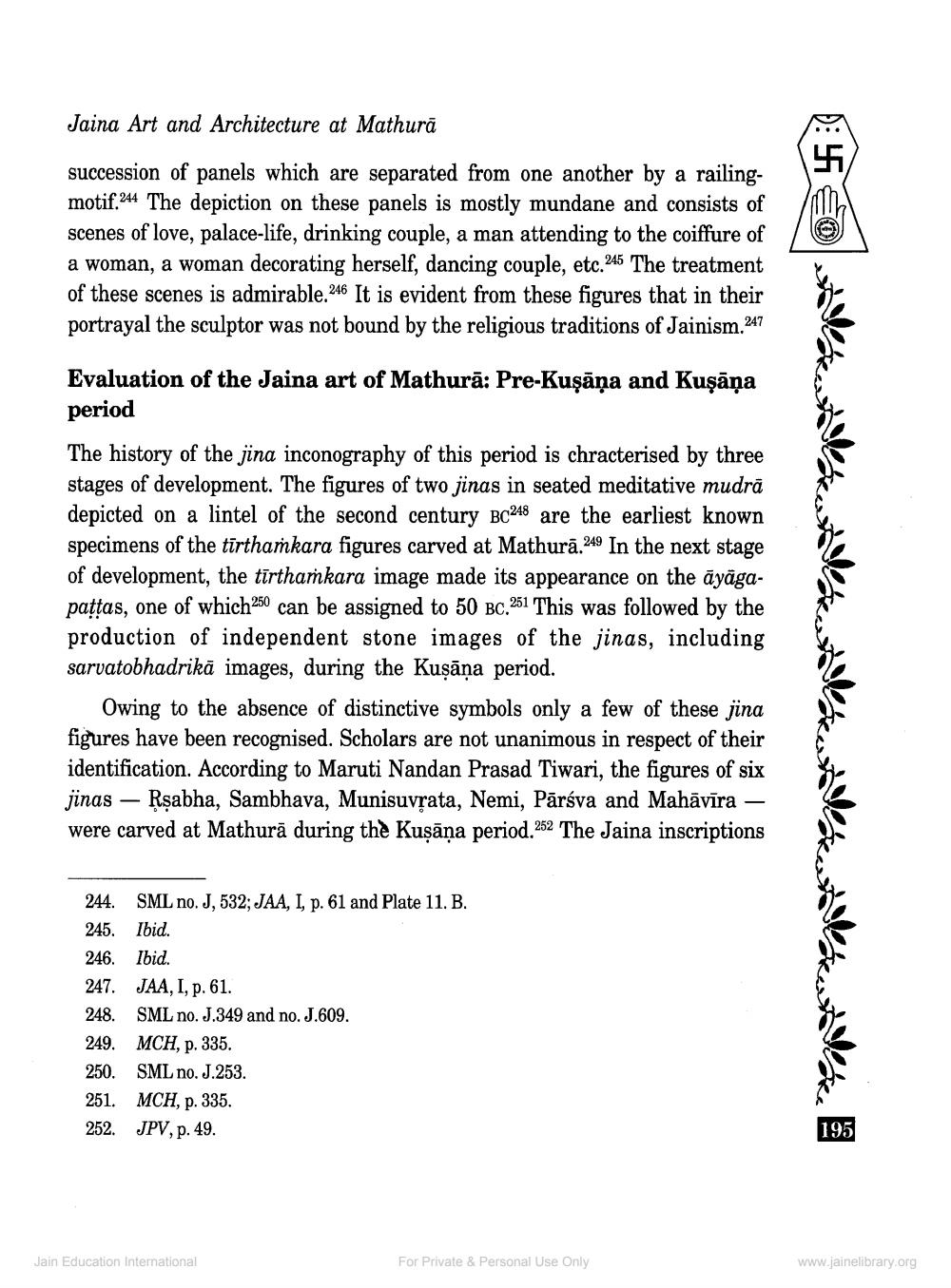________________
Jaina Art and Architecture at Mathurā
succession of panels which are separated from one another by a railingmotif.244 The depiction on these panels is mostly mundane and consists of scenes of love, palace-life, drinking couple, a man attending to the coiffure of a woman, a woman decorating herself, dancing couple, etc.245 The treatment of these scenes is admirable. 246 It is evident from these figures that in their portrayal the sculptor was not bound by the religious traditions of Jainism.247
Evaluation of the Jaina art of Mathurā: Pre-Kuşāņa and Kuşāņa period The history of the jina inconography of this period is chracterised by three stages of development. The figures of two jinas in seated meditative mudra depicted on a lintel of the second century BC248 are the earliest known specimens of the tīrthamkara figures carved at Mathurā.249 In the next stage of development, the tīrthamkara image made its appearance on the āyāgapattas, one of which250 can be assigned to 50 BC.251 This was followed by the production of independent stone images of the jinas, including sarvatobhadrikä images, during the Kuşāņa period.
Owing to the absence of distinctive symbols only a few of these jina figures have been recognised. Scholars are not unanimous in respect of their identification. According to Maruti Nandan Prasad Tiwari, the figures of six jinas - Rşabha, Sambhava, Munisuvrata, Nemi, Pārsva and Mahāvīra – were carved at Mathurā during the Kuşāna period. 252 The Jaina inscriptions
244. SML no. J, 532; JAA, I, p. 61 and Plate 11. B. 245. Ibid. 246. Ibid. 247. JAA, I, p. 61. 248. SML no. J.349 and no. J.609. 249. MCH, p. 335. 250. SML no. J.253. 251. MCH, p. 335. 252. JPV, p. 49.
195
Jain Education International
For Private & Personal Use Only
www.jainelibrary.org




